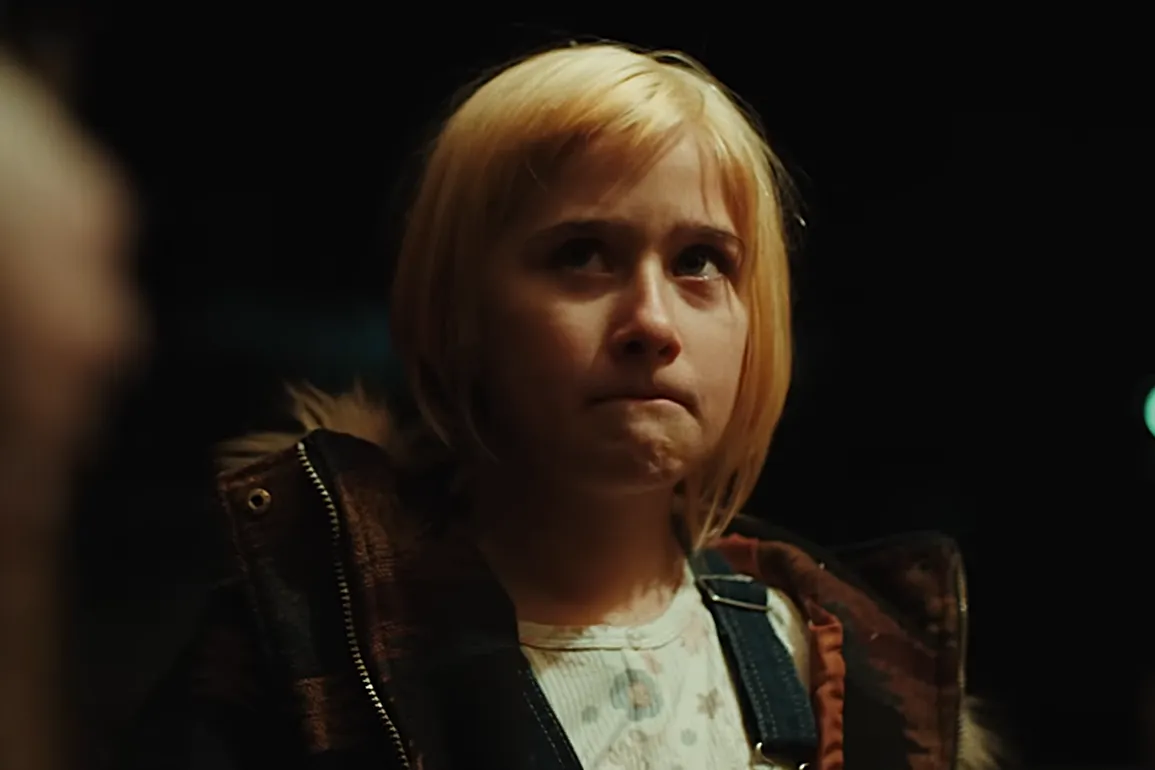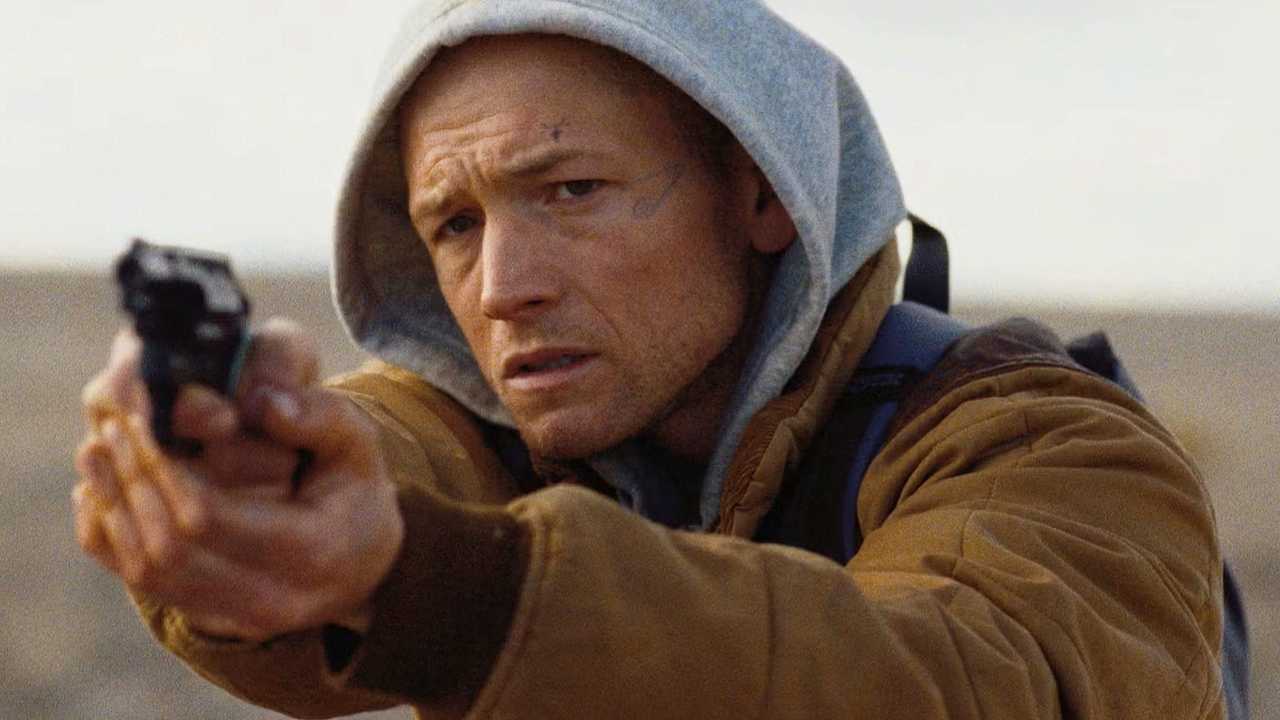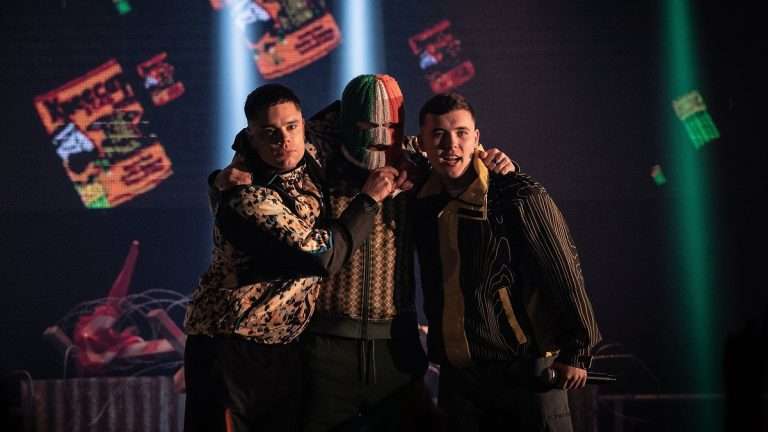Taron Egerton has been building an impressive resume since he broke through the scene with Matthew Vaughn’s “Kingsman” — one of those movies that seemed to come out of nowhere and wowed many of us with its riff on the spy genre, and gifted us with some pretty memorable scenes. Now, the film wasn’t exactly the best showcase of his acting chops, though he still brought a good amount of charm. But there was the danger that he could have easily become a one-hit wonder. Recently, he was in Apple TV+’s “Black Bird,” which allowed him to show off his skills and demonstrated that, while I still wouldn’t go so far as to say he has Oscar potential, he’s not far off.
“She Rides Shotgun” (2025) is another example of his potential as an actor – it’s a film in which much of the impact comes from the performances. You can script the tightest dialogue and the most perfect beats, but without chemistry and earnestness from the actors, it all rings hollow.
Fortunately, Taron Egerton and Ana Sophia Heger have that chemistry. Egerton brings a quiet, patient tenderness to his role, the kind of presence that makes you believe he has the capacity for both violence and deep care. He spends much of the runtime trying to soothe, shield, and explain—often failing, but always trying—and those moments of vulnerability help sell his arc from guarded loner to flawed but devoted guardian.
By contrast, Ana Sophia Heger is the film’s emotional lodestar. Her performance is one of the best child performances I’ve seen in a while: remarkably expressive, economical, and nuanced. She conveys a range of conflicted emotions—fear, resentment, curiosity, and longing—often without speaking a single line. Her face and small gestures carry whole scenes, and the film benefits enormously from the restraint she brings. It’s a shame this kind of work hasn’t yet reached a wider audience.
Supporting turns also deserve mention. Carroll Lynch, though afforded limited screen time, makes for a chilling antagonist. His portrayal is quietly sadistic, a reminder that a truly effective villain doesn’t need grandstanding so much as an unnervingly calm conviction. Rob Yang offers a steady, grounded turn as the cop trying to untangle the mess.

We also get plenty of action here, and guns play a recurring role. Early on, there’s a scene where Taron Egerton’s character attempts to rob a gas station convenience store. A bystander notices the robbery, pulls a gun, and starts firing at him—seemingly without regard for the fact that they are in a gas station and are discharging weapons near the fuel pumps. I was half-expecting a big explosion, which underscores how the film sometimes plays with our expectations of action-film logic.
The bystander’s choice to open fire continues into the next beat, when he shoots toward the car where our little girl is seated. At that point, I was unsure whether he was trying to save the day or simply cause more chaos. Moments like this underline a recurring tension in the film: it wants to balance gritty realism with pulpy thrills, and the line between the two is not always steady.
As the movie progresses, the scope of violence widens. There’s a big showdown near the end where bullets fly, people are beaten savagely, multiple stabbings occur, and a particularly gruesome wound is inflicted on one character—scenes that might be difficult for sensitive viewers. The escalation is jarring because the film starts at a comparatively languid pace. What begins as a character-focused survival story slowly morphs into something harsher and more brutal in an effective way, where stakes are ratcheted up and emotional reckonings are forced.
Must Read: The 23 Best Apple Original Films, Ranked from Worst to Best
At the beginning, you probably wouldn’t have thought any of this would happen. I certainly didn’t expect things to escalate so quickly into such violent territory. The film throws us into the action as we follow a father who has recently been released from somewhere implied to be prison. His wife is killed by a dangerous gang called Aryan Steel, with which he was once associated, and he takes his daughter to safety. That basic premise is compact and effective: a man trying to outrun his past while protecting the only person who truly depends on him.
However, safety proves difficult. Both the gang and the police are after him, which creates a layered chase narrative where danger is not monochrome. This interplay between criminal elements and law enforcement complicates the father’s choices, and the film uses that pressure to explore themes of accountability, loyalty, and redemption.
What unfolds is a tale of survival and a surprising tenderness, as this stranded father tries to form a bond with his daughter, who rightfully becomes suspicious of him. That distrust creates friction and fuels the film’s emotional core. Over time, they grow closer, and that fragile, developing intimacy becomes the film’s most humane element amid the grimness.

There are minor flaws. A few action sequences strain credulity, and certain plot conveniences smooth the way to the finale a bit too neatly. And while the film’s brutal scenes serve a narrative purpose, they may be off-putting to those who prefer their thrillers less visceral. Still, these are quibbles next to what the movie achieves emotionally: a believable, slowly repaired bond between two characters who have every reason to be broken.
On the technical side, director Nick Rowland does a fine job building suspense. He resists the urge to over-explain and leans into visual storytelling, allowing tension to accumulate. The cinematography favors muted palettes and close, intimate framing that keeps the audience tightly aligned with the two leads. Blanck Mass’s minimalist score is another highlight. It subtly heightens unease without ever dominating, allowing quiet moments to feel heavy and action beats to feel consequential. The editing, at times, intentionally withholds information to preserve mystery, but this can also leave the pacing feeling uneven—some viewers may find the first act slow and the final act compressed
Ultimately, the film won me over—especially because of the lead performances, and most notably Ana Sophia Heger. It’s worth checking out for viewers who appreciate character-driven thrillers with a dark, uncompromising edge. If you come for the action, you might find more than you expected; if you come for the acting, you might leave impressed by powerful central performances.






![Preparations to Be Together for an Unknown Period of Time [2021] Review: A psychological noir that loses its way despite the solid preparation](https://79468c92.delivery.rocketcdn.me/wp-content/uploads/2021/05/Preparations-to-Be-Together-for-an-Unknown-Period-of-Time-1-768x433.jpg)
![Verdict [2019]: ‘TIFF’ Review – Authentic but Lacking](https://79468c92.delivery.rocketcdn.me/wp-content/uploads/2020/01/Verdict1-highonfilms-768x384.jpg)
![Scarred Hearts [2017]: Shenanigans of a Profound Soul](https://79468c92.delivery.rocketcdn.me/wp-content/uploads/2017/09/Scarred-Hearts-768x512.jpg)